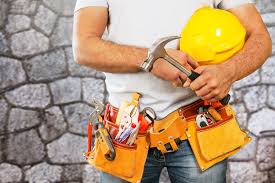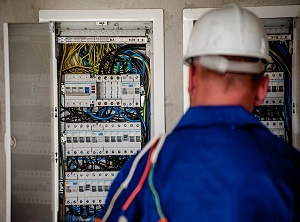Different uses of a retaining wall

Building construction, land development, landscaping, and even infrastructure like highway and roadway building all have something in common. They all require moving dirt around. When this happens it causes parts of the ground to be lower than others. This means there is a possibility for the dirt which is higher to wash or fall into the lower parts. You’ve seen them at schools, near bridges, and even in parks and gardens.
Retaining walls can be beautiful or utilitarian, but they are always useful. In areas where there may be a lot of rain these walls can hold back mudslides while allowing for proper draining. In arid areas, like the north American southwest, they can prevent natural wind erosion from blowing dirt and sand into specific areas. They can even be used for safety in situations where parts of a building would otherwise be exposed to dangers.
Perhaps the most common use of retaining walls is in landscaping where the developer needs to place an automobile access, parking area, or pedestrian walkway. In order to make these areas more passable, safe and level, the development company has to remove anywhere from a small amount to a copious amount of earth. That’s when a retaining wall is used to hold the dirt in place and keep it from washing or falling and damaging the finished areas. These walls may be built of any number of materials including concrete, rock, steel, or wood.
Because these structures will be “holding back” possibly thousands of tons of earth it is important that the retaining wall be designed by a structural engineer who knows how to select the appropriate materials and to design their construction in such a manner as to prevent failure or other collapse. Especially when building a retaining wall for use in important infrastructure like around a highway or bridge overpass, it is important that the engineer remember things like drainage and constant vibration. These may not be as critical for a retaining wall in an area like a community park.
Sometimes retaining walls are referred to as earth-retaining walls. Before modern times and modern construction the were also referred to as earthworks. Regardless of the materials and use, the purpose is always the same: to hold part of the earth in place and keep it from falling into another area. For that purpose levelling and excavation like backyard excavation need to be done before going for retaining wall. Here are just a few applications of retaining walls:
School construction
Road construction
Military construction
Gardens and parks
Shopping centers
Bridge building
Stream and river diversion
As you can see there are a great number of uses for retaining walls. Each specific use has it’s own set of challenges and it is important that the designer, engineer and builder work together to ensure long-term safety and strength. As you plan your project make sure to involve these parties from the beginning of the process. Experience is definitely the best teacher when it comes to long lived use. Apart from that concrete resurfacing in Melbourne in also one the important need to be taken cared. When building something as critical to safety and value it pays to build the best retaining wall available.
Are you looking for concrete slab contractors in Melbourne? We have got you covered. Get in touch with us today for a free quote.
If you are looking for plasterer in Toorak, we have got you covered. Contact We Fix Walls today for plasterer Murrumbeena services.
At Jurassic Landscaping, we can show you a wide range of timber products for your retainer walls Melbourne and provide you with reliable landscaping solutions.
For professional tuckpointing melbourne, Call our experts today for quality services.
Looking for the best plantation shutters in Melbourne? Everything Blinds offers custom made timber plantation shutters & PVC shutters at an affordable price.Contact us today to know more.

